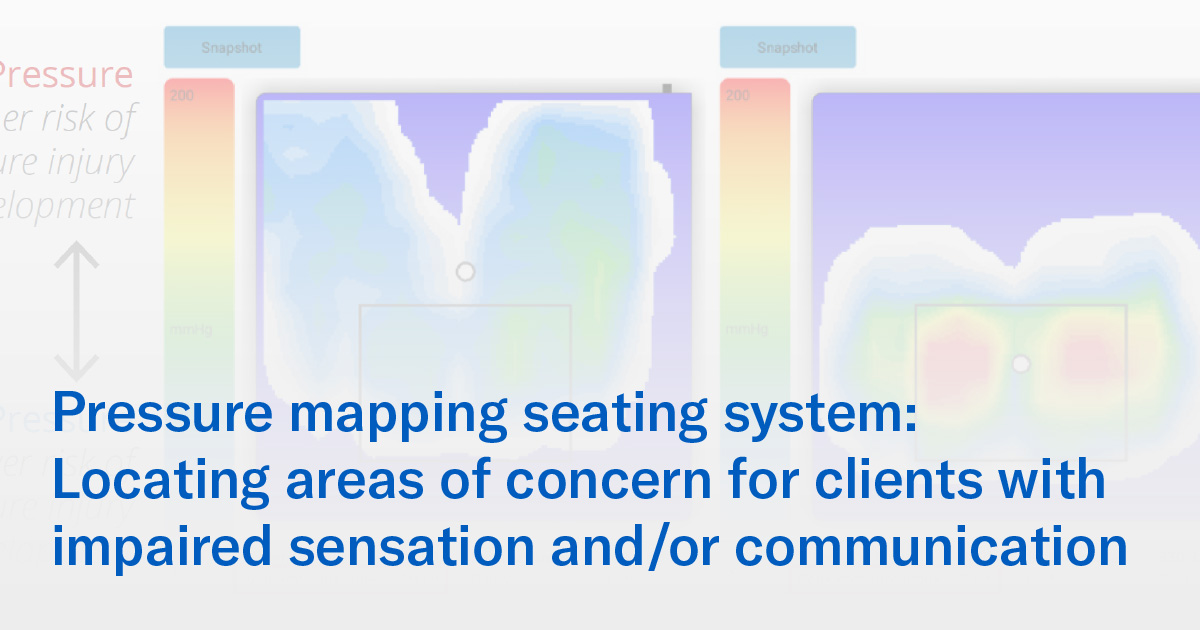This is part 5 of a series focusing on pressure mapping and pressure mapping systems. See part 1, part 2, part 3, and part 4.
Typically, during wheeled mobility interventions, we rely on our clients to give feedback as to what the initial issue is, and how they tolerate the changes we make in their wheelchair systems. But what do we do when the client can’t feel the change or cannot verbally supply us with the feedback we rely on to ensure we are making the right choices? Wheelchair positioning can be difficult with clients with sensory or cognitive impairment.
Impaired sensation
When clients present with poor sensation and comorbidities such as diabetes, detecting high risk areas for pressure injury is a little more difficult. The client may not have that sensory cue of pain or discomfort that provides those initial warning signs that pressure is increasing. They don’t report pain or discomfort and a nurse or caregiver may only notice a problem once the pressure injury has already developed.
When treating clients with poor sensation, a pressure mapper can help to identify those high-risk areas that the client cannot report. With this tool, a therapist can:
- look at the statistical values and identify if the current seating system is placing a client at higher risk,
- make changes to the seating system and compare the statistical values until you see numbers that indicate better pressure redistribution.
Using this valuable tool for insight, a therapist can prescribe the appropriate equipment choices and wheelchair configurations to redistribute pressure away from the wound site to give it a chance to heal.
Cognitive impairment
Clients with cognitive impairment often cannot verbalize pain correctly or at all if non-verbal. For clients with cognitive impairment or the inability to verbalize, pain caused by a wound site or an ill-fitting wheelchair system is often expressed as:
- Aggression
- Uncontrolled stress
- Irritability
- Mood swings
- Wiggle/fidget often in chair
- Attempt to get up unassisted from the wheelchair often
Pressure mapping can again:
- Help to identify areas of peak pressures that might be painful
- Identify wheelchair features that may be contributing to pain/discomfort, resulting in increased behavioral issues
- Set individualized pressure relieving/repositioning programs to minimize anxiety/pain and other behavioral issues
Use the pressure mapping system to allow you to see more clearly how well the wheelchair seating system is working, or NOT working, for those clients that cannot verbally guide you through those details!


 Ana Endsjo, MOTR/L, CLT
Ana Endsjo, MOTR/L, CLT
National Education Manager - Long Term Care Division
Ana Endsjo has worked as an occupational therapist since 2001 in a variety of treatment settings. She has mainly worked with the geriatric population, dedicated to the betterment of the treatment of the elderly in long term care centers. Her focus has been on seating and positioning and contracture management of the nursing home resident. With this experience, her hope is to guide other therapists, rehab directors, nurses, and administrators through educational guides, blogs, webinars, and live courses in her role as National Education Manager - Long Term
